#kowloon park
Explore tagged Tumblr posts
Text

July 19-26, 2023 - Hong Kong
5 notes
·
View notes
Text








Hong Kong's Kowloon Park is nestled amidst the bustling cityscape. This urban oasis offers a tranquil escape from the chaos of everyday life.
0 notes
Text
Most major US cities average 20-30% parking lot by surface area, and that's in areas where land is expensive.
The plain fact of the matter is that parking garages are very expensive to build and maintain. It's cheaper to buy another ten acres of surface parking lot than it is to build the same amount of parking spots in a tower. You don't want to build the garage into your building because road salt is corrosive to reinforced concrete and no one wants that maintenance nightmare undergirding your 30-story office/residential block.
(huge parking minimums in the zoning code is definitely a contributing factor; my local grocery store's lot is half empty on high-demand days, and 10% used usually)

46K notes
·
View notes
Text
Holiday Bliss in Hong Kong: Your Guide to a Festive Wonderland
Imagine stepping into a holiday postcard—twinkling lights overhead, the scent of festive treats in the air, and music that warms your heart even in the winter chill. This season, Hong Kong transforms into a spectacular haven of holiday magic, offering Filipino travelers a chance to create extraordinary memories with family, friends, or that special someone. From enchanting Christmas markets to…
#Christmas in Hong Kong#Clockenflap Festival 2024#Hong Kong holiday season#Hong Kong romantic getaways#Hong Kong theme parks#Hong Kong WinterFest#Pokémon GO City Safari Hong Kong#press release#West Kowloon Christmas Market
0 notes
Text
Hong Kong Secrets: Uncover The Top 10 Must-Visit Hidden Gems
#best kept secrets Hong Kong#Big Wave Bay#Blade Street in Sheung Wan#cultural spots in Hong Kong#discover Hong Kong#explore Hong Kong#hidden attractions Hong Kong#hidden Hong Kong#Hoi Ha Wan Marine Park#Hong Kong adventure#Hong Kong exploration#Hong Kong hidden gems#Hong Kong local experiences#Hong Kong secret locations#Hong Kong travel guide#Hong Kong unusual attractions#Kowloon Walled City Park#lesser-known Hong Kong#Museum of Medical Sciences#off the beaten path Hong Kong#Ozone Bar#Peng Chau Island#quiet spots in Hong Kong#secret Hong Kong travel#secret spots in Hong Kong#Sun Yat Sen Memorial Park#Tai Long Wan#Ten Thousand Buddhas Monastery#unique places in Hong Kong#Yuen Po Street Bird Garden
1 note
·
View note
Text
The weird and wonderful history of Kowloon as a digital interactive space - Part I

The Kowloon Walled City was one of the most emblematic locations in Hong Kong due to its irregular, fast-paced and largely ungoverned growth within a minute parcel of land. During the occupation of Hong Kong Island by the British in the mid 18th century, the Qing authorities surrounded the area with walls, turning it into a strategic position from where to closely inspect the foreign nation's covert activities. Almost a century later, during World War II, the area was seized by the Japanese, who tore down the walls and repurposed the stone for the construction of a nearby airport.
After the war, China would eventually regain possession of the city, though the disinterest of local authorities in addressing its increasing social disturbances placed it in a downward path to a state of utter degradation. By the 1970s, Kowloon had become the epicentre of Hong Kong's criminal underworld, dominated by a handful of its most vicious Triads.
Towards the last years of its existence, the ancient settlement was as a precarious heap of concrete, sheltering nearly half a million people within less than seven acres of land. Cultural and political changes in China made it increasingly difficult for this urban anomaly to remain unaddressed. In the late 1980s, an action plan was put together aiming to relocate its inhabitants and reconvert the real estate into an inner-city park. Stories about residents refusing to leave their unsafe and unsanitary homes were featured prominently in newspapers, baffling readers all over the world. Once the single most densely populated area in the world, this enclave was an architectural aberration whose disconcerting aesthetic influenced numerous works of art in different fields of creation; including a small yet consequential number of video games that briefly reference or prominently feature this abominably transfixing space.
九龍島 (Kyu-Ryu-Tou) - Starcraft - 1986

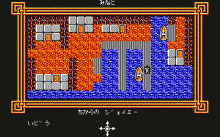
The year is 2025. An arms dealer escalates the tensions between East and West by developing a genetic weapon in a secret base at Kowloon Island. The United Nations react by sending in their best man, Jamie Starr. Unrelated to the Walled City itself, the first game to be located in the Kowloon peninsula - and indeed include the name as a part of its title - is this obscure turn-based RPG, Kyu-Ryu-Tou for the NEC PC88 and FM-77 machines. The game is a sequel to Shangai, released the year before, featuring the same protagonist. Starcraft would also go on to produce a third instalment in 1987 named TO.KY.O. Clearly there wasn't much regard here from the developers part for geographic accuracy, as Kowloon is depicted here as being an island. While Hong Kong's southern territory is composed of an actual island, all the different areas named Kowloon are located in the mainland.
Riot City - Westone - 1991
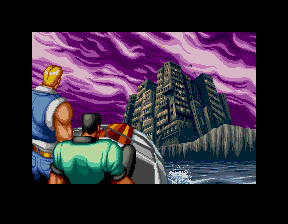

One of the most shameless specimens among a relatively long list of Final Fight clones, Riot City contains subtle references to Kowloon, though never referring to it by name. Two narcotics detectives are assigned with the mission of dismantling a cartel running a crime-ridden located in fictional Riot Island. This recurring yet geographically nonsensical notion of Kowloon as an island comes up here, yet again. The final moment of the introduction sequence for this minor Sega arcade success shows both protagonists approaching a tight cluster of buildings whose source inspiration is quite unmistakable. Because Westone maintained ownership of most of this production's intellectual property, a later port to the PC Engine entitled Riot Zone was made possible with the help of Hudson soft. Kowloon's Gate - Zeque - 1997
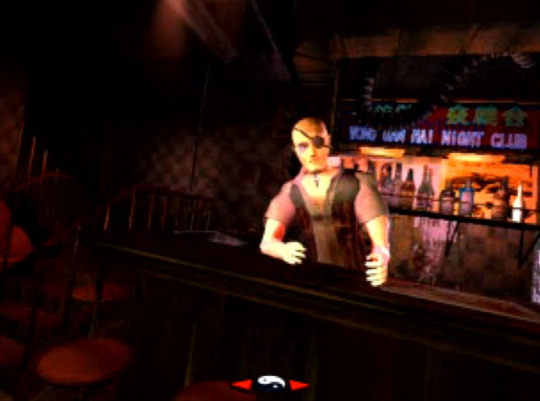
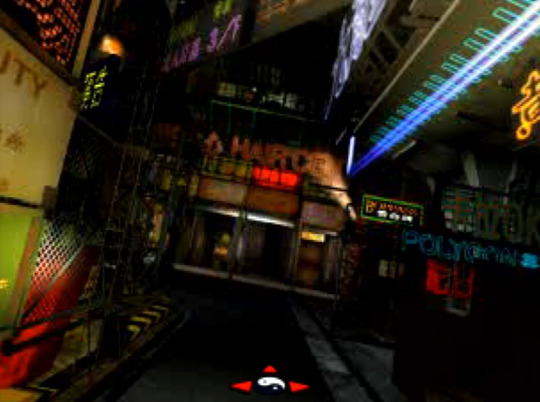
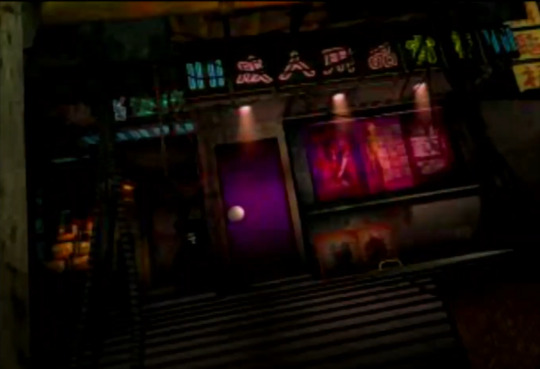
Reviving the Walled City through the lens of cybermystic surrealism, Kowloon's Gate is a dense, daunting adventure masterfully capturing the slum's dark and narrow recesses. This 1997 Japanese Playstation exclusive spans across four discs of unparalleled full motion 3D CGI spectacle, alternating with real-time 3D dungeons brimming with outlandish characters and concepts deeply inspired by Chinese history, geography and cultural traditions.
Ironically, Zeque managed to embed the theme of Feng-Shui, the ancient geomantic art seeking harmony between the individual and their surrounding space, into a story set in the world's most historically untidy district.
SaGa Frontier - Square - 1997
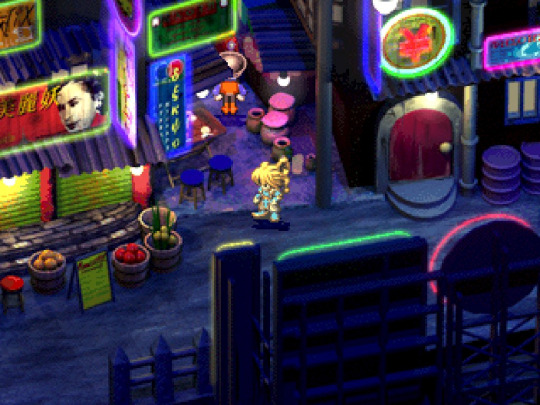
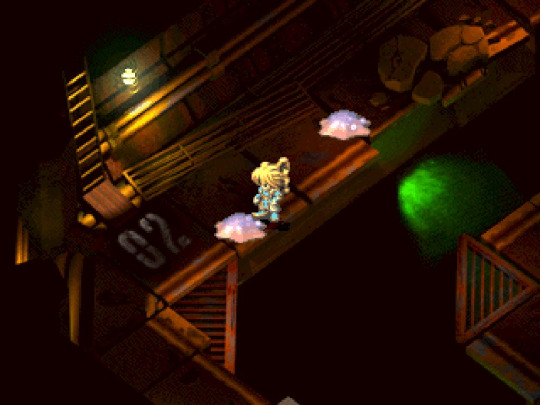
SaGa Frontier takes place in a solar system named The Regions, composed of multiple inhabited worlds for the player to explore, each with its different degree of civilizational development and culture. One of these planets goes by the suggestive name Kūron. Its pervasive neon light signs, food stalls, makeshift cabins and rooftop scaffolding instantly evoke the memory of China’s so-called city of darkness.
Shadow Hearts - Sacnoth - 2001

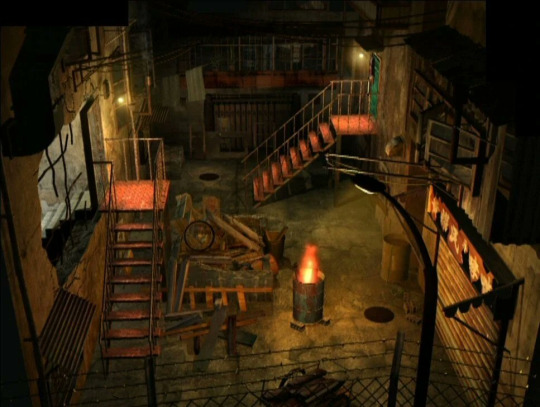
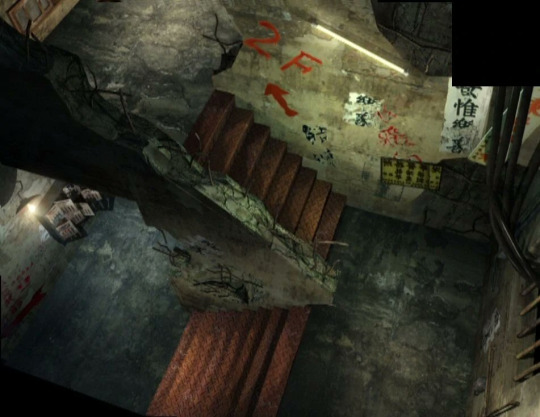
Shortly after the release of Koudelka, Sacnoth's initiated the development of Shadow Hearts, the first episode from a cult RPG trilogy exclusively designed for the Playstation 2. In good Japanese fashion, the game proposes an anachronistic yet visually suggestive depiction of Kowloon, portraying its architectural style and degree of decay as it existed in the late twentieth century, despite the fact that the game's events take place during the nineteen twenties.
Just as noteworthy is the almost complete absence of any inhabitants, which inadvertently make this portrayal of the quarter eerily reminiscent of the state in which it was found circa 1993 or 1994, as local authorities brought the long, arduous eviction project to a close.
Shenmue II - SEGA AM2 - 2001


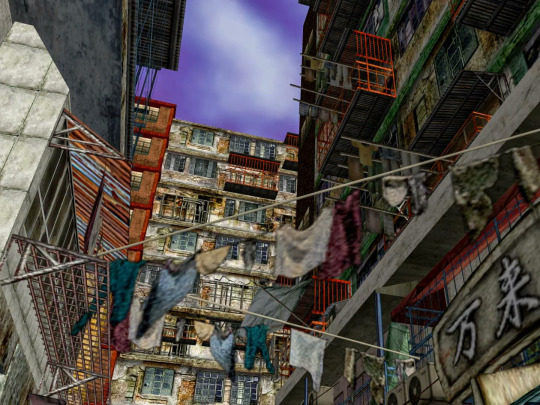
Shenmue II exhibits the most complete and period-accurate video game representation of Kowloon to date. While more recent games featuring this area may represent a number of its aspects with the aid of improved visual fidelity, none features it with such depth as this masterpiece of masterpieces. More than mere background decoration, Kowloon exists in the Shenmue series as a crucial, climacteric element of its modern epic narrative.
It is a well known fact that Yu Suzuki and his team conducted extensive research of the region so as to achieve a result that impresses even to this day. It must be noted, however, that they have similarly taken a fair share of creative liberty when converting the area to best align with the themes they wished to explore. Further reading is required for a more complete context in this regard, namely how this area ties with an early Dreamcast tech demo design which fans lovingly named Tower of Babel. Ostensively, technical limitations did curtail the degree of precision in which the surrounding area could be replicated. The aerial view from the cutscene in which Ryo Hazuki arrives on location places Kowloon at an imaginary degree of elevation over surrounding vegetation. In the year of 1987, during which the game is set, the actual enclave stood perfectly levelled with a myriad of other modern buildings, undoubtedly more than could be reproduced under the circumstances. These trifling considerations aside, Shenmue II entirely succeeds in capturing the vibrant life and mesmerizing beauty of the destitute and decayed urban agglomeration, in a way that it was deemed entirely impossible at the time of its release.
For reasons entirely related to per post content limitations imposed by Tumblr, this article will be continued in PART II.
#china#hong kong#kowloon#kowloon walled city#videogames#Kyu-Ryu-Tou#riot city#saga frontier#kowloon's gate#shenmue ii
423 notes
·
View notes
Text
Thaddeus x reader
Note: yes,I love Thaddeus 😭
I tried to highlight Thaddeus abandonment issues and his dark side so here's the final version,I hope you enjoy it 💋
cw: obsession, stalking, thriller, manipulation, abandonment issues
---------------------------------------------------------
Twisted Love



----------------------------------------------------------
The moon lies high in the sky, full of stars, illuminating the empty streets of Kowloon Hell with its tender light, where darkness reigns and the nights seem endless.
Lying on the edge of the main rooftop:
Thaddeus.
His head is full of thoughts.
~HIS POV:
Loneliness isn't just a horrible feeling; it's a companion that doesn't leave. My mind replays my past, each abandonment reminding me of how fragile I truly am. It's the weight of how easily people I cared about left me, as if I were a burden in their lives. It happened many times before—people have come and gone, and each departure left a scar deeper than the last.
"Ah, little bunny," I say, closing my eyes as I visualize your pretty face.
Your existence haunts me. The way you laugh when I make a stupid joke makes my heart skip a beat. That’s strange because I’ve always been good at keeping my distance, but with you, it's different. I can't stay away from you.
When I feel alone, I remember your small hands touching my face—gentle, soft strokes caressing me. You treat me as if I were someone worthy of your love. That’s why sometimes I’m overprotective: you’re too precious, and I don’t want you to suffer.
It’s funny, isn’t it? I pretend to be the good guy around you... I pretend to be the good friend—when in reality, I want to take you away from everyone. I just want to keep you safe from anyone who could hurt you. I’m the only one who can give you what you need.
You said it yourself the other day as we were walking to the park:
"You're the only one who truly understands me."
The affection in your eyes, that smile—no one ever gave me that. And I told you, playfully, "That's because we're meant to be." You blushed, looking so cute. But I wasn’t joking. We are meant to be. Together. Forever.
Sometimes, when the cold breeze of my domain envelops me, I wonder if this is what I deserve—being abandoned, left to face this cruel world alone. But when those thoughts overwhelm me, you come to mind. You’re the light that chases away the monsters.
I want to be the only one to whom you give your attention, your warmth, your smiles.
What I feel is not love.
No, it’s something darker, deeper.
Something I can’t control, something lurking in the back of my head, a sickening feeling—it’s obsession.
You’re not aware of the way I hide in the shadows to capture a glimpse of you. You don’t know how many times I’ve climbed up to your room to watch you sleep... so peaceful and innocent.
Too innocent for this world. Too innocent for me.
You’re too pure to be with someone as dark and twisted as me, but I am a selfish man. I have no intention of letting you go, little bunny.
My heart wouldn’t bear the sight of you in the arms of another man.
Before meeting you, it felt like I was invisible to everyone... a shadow fading into the background. Just one step away from being forgotten. But you, with your kindness, taught me that even I matter.
Sometimes I wonder if you feel it—if you feel my twisted love for you. When you look at me, I see it in those pleading, soft eyes of yours.
You can’t deny it, little one. You’re attracted to me, I know you are. You’re just too afraid to admit it.
But don’t worry. I’ll keep playing the charming prince for now. After all, I’m good at it.
"You're so cute when you blush, little bunny."
I chuckle, teasing you. "I'm sorry for teasing you... but I can't help it. It's just too fun."
We'll keep playing the cat and mouse as long as you want. I don’t mind.
At least I get to stay close to you.
Sooner or later, you will succumb to your desires.
You will come to me.
You have to.
You need me as much as I need you.
And I’ll be more than happy to satisfy you, my little bunny.
#killer peter#killer peter thaddeus#m4a#thaddeus x reader#thaddeus#wrtiting#obsessive thoughts#obessive love#killer pietro#killer pedro#killer badro#killer peter x reader#tadeo#manga#manga x reader#manwha x reader#pov#x reader#experimental#love#cw stalking#cw obsessive behavior#cw mental health#cw control#controlling#webtoon#yandere#abandonment issues#short story#story
34 notes
·
View notes
Text






kowloon walled city (the last pic is a theme park inspired by kowloon) in my last lucid dream i found myself in a similar environment and explored it a little cool af experience
12 notes
·
View notes
Text
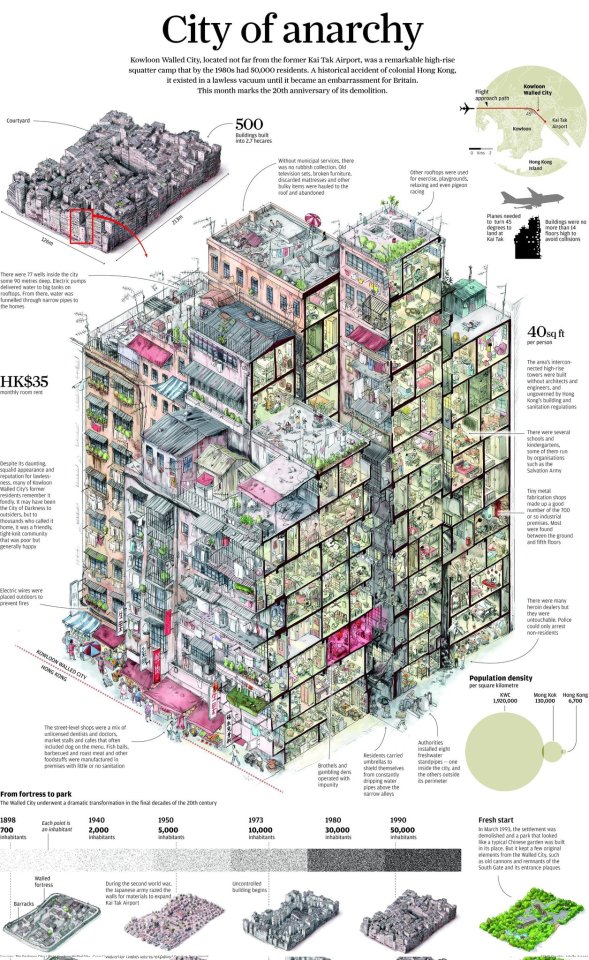


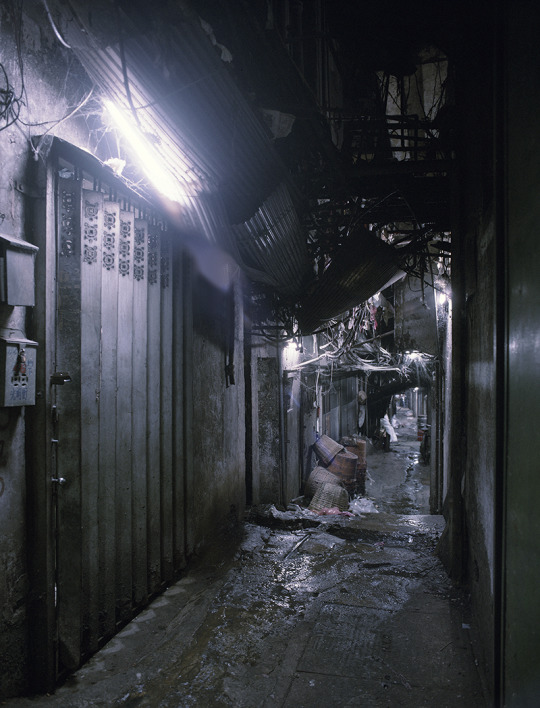
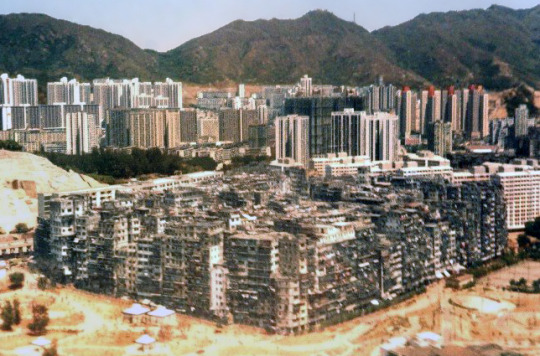


Various images inside and outside of Kowloon Walled City (demolished in 1993-1994), and replaced with a park because we can't have anything nice or not controlled by the state.
#kowloon#kowloon walled city#urban landscape#look how they massacred my boy#or however the city thought of itself
98 notes
·
View notes
Text
Submitted via Google Form:
Do you have any ideas on how to world build a massive overpopulated city but it isn't dirty or in shambles. Basically, everything is neat, clean and works well. Just a massive population density. I'm thinking 30k people per km2 with a total area of 1200km2. When I find images or descriptions of such high density populations I often see buildings that kind of look all rundown and slummy (not to mention high crime rates and poor if not in poverty) Or is that like.. impossible if you have such a massive crowd in one spot?
Tex: “Overpopulated” implies “more residents than the infrastructure can accommodate”. What’s considered dirty or in shambles is the result of a garbage disposal system that isn’t structured to the amount of residents + guests (tourists, relatives, holiday-goers, etc). To have a city or other area properly equipped with the amount of employees to maintain sanitation and employees to repair buildings degrading over time, it must have properly-allocated funds, and enough of it. This is at its core a governance and taxation issue, not a morality issue of “just don’t make it dirty”. Crime and poverty are the natural result of neglect by one’s government, both at a local and larger level, which requires a lot of forethought in the amount of space an individual needs to live in private and public spaces.
Utuabzu: I’m going to assume you want a prosperous city with very high density. Happily for you, there are many examples of this in the real world. Density occurs when the demand for living/working space in an area is greater than the physical space available, meaning it is worthwhile to create more space by building upwards. This naturally occurs in the centres of all cities, because proximity to one another is a big draw for both people and organisations. In the absence of any limiting factors, this is usually counterbalanced by cost making it cheaper to build outwards and simply accept longer travel times, resulting in a relatively gradual gradient of density from rural periphery to urban core.
You get greater density when there are limiting factors on outward expansion. These can be geographic, like in the case of Singapore, Hong Kong and Manhattan (all islands), legal, like in the case of Vancouver, London and many other cities (laws and policies preserving green belts or valuable farmland), or political, such as was the case for Hong Kong and still is for Singapore (an international border acting as a constraint). Often it’s more than one of these. While places like Kowloon Walled City can exist - and it in particular is a very interesting case study in urban form - for the most part very high density occurs when people want to live and work somewhere, which usually means it’s a pretty nice place to be (at least in comparison to the other options anyway). Tokyō is the world’s largest city, with 36 million people (11 million more than the entire continent of Australia), but I don’t think I’ve ever heard anyone accuse it of being dirty or in a shambles.
It is also worth noting that density doesn’t necessarily look like skyscrapers towering overhead. Paris has a population density of almost 25k/km² when one excludes the outlying woodland park areas, and is predominantly mid-rise buildings. The 11th Arrondissement of Paris outdoes what you ask for, with a population density just under 40k/km², and is mostly historic midrise buildings. Other European cities like Barcelona, Naples and Thessaloniki have a similar development pattern, largely due to having been built mostly before elevators existed or were commonplace, which naturally limited building heights to around 5 to 6 floors (any higher becoming increasingly impractical for the sheer number of stairs).
Feral: The International Residential Code has the minimum size required for a house to be 120 sq ft/11.1 sq m. That’s a pretty standard secondary bedroom size in suburban USA. Your population density would have one person per 33.3 sq meters, which sounds great except that doesn’t account for any non-residential use space. Given your desire for the entire city to be exceptionally well-maintained, free of crime, and presumably a wonderful place to live, that means you need great air quality, multiple green spaces, art, food, entertainment. And your city’s overall size is massive. It’s 20.5 times the size of Manhattan, 11.3x the size of Paris, and 1.6x the size of Singapore - to name a few of the cities brought up in previous answers. This kind of sprawl does not make for good urbanization - just ask the city of Los Angeles, which is almost exactly the same overall size as what you’re aiming for but has a tenth of the density.
A few articles to get you started on density, urbanization, and sprawl:
Cities Really Can Be Both Denser and Greener by Emma Marris
Is There a Perfect Density? By Michael Lewyn
When is density good, and when is it harmful to cities? By Philip Langdon
Making cities more dense always sparks resistance. Here’s how to overcome it. By David Roberts
27 notes
·
View notes
Text
I dreamed I was some sort of agent for the "Allies" (by which I apparently meant the western world) going into an anarchist enclave (built something like Kowloon Walled City) on a mission to try to get them to accept aid because we were worried that they were headed towards ecological collapse, and this somehow would be a bad thing in our continuing cold war with the soviet union. I had to contact the five main gang leaders within the enclave, and the first I made contact with was in the back of a music co-op where they'd somehow moved an entire battleship in. A beached battleship, obviously. I woke up before I found out where the other leaders were located, because I lost a lot of time because my initial entry into the city was incorrect. I was sent into what we thought was the "main entrance", which was on the second floor of a new york city car park, but it turned out to be a back door into the dressing room of a troupe of polyamorous theater actors. They were at least able to redirect me to the main entrance. They suggested I join them for an orgy but I had a job to do, so I declined. An annoyed catgirl said I wouldn't be able to get in the main entrance, but she was wrong and I had no issues.
I don't know why my dreams keep taking place in worlds where the USSR still exists. Also my dream brain has a bad idea of what anarchism is, apparently. I don't know why there were gang leaders, and the whole place had more of a "crime den" vibe in the midst of a cold war between rival gangs, rather than any actual anarchist society.
88 notes
·
View notes
Text

July 19-26,2023 - Hong Kong
4 notes
·
View notes
Text
Bruce Lee
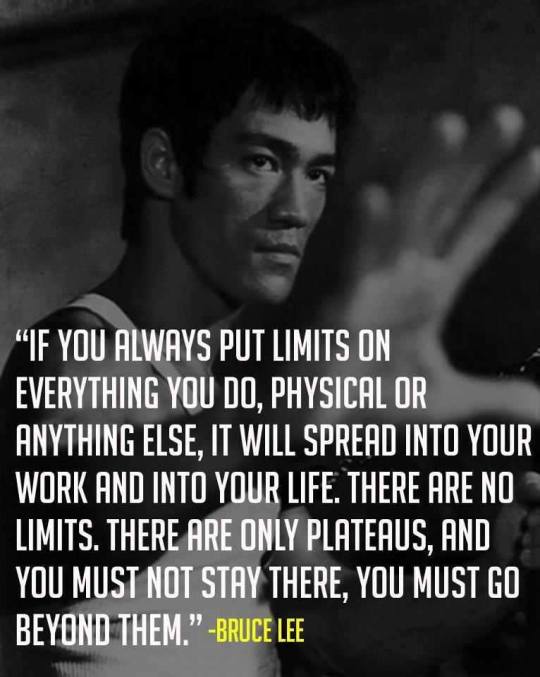
On this day, on November 27, 1940, one of the most famous martial artists was born. Born Lee Jun-fan (Chinese: 李振藩; November 27, 1940 – July 20, 1973), known professionally as Bruce Lee (Chinese: 李小龍), Bruce Lee has come to be more known for his philosophy more than his body of work as an actor or as a martial artist.
He was the founder of Jeet Kune Do, a hybrid martial arts philosophy drawing from different combat disciplines that is often credited with paving the way for modern mixed martial arts (MMA). Lee is considered by commentators, critics, media, and other martial artists to be the most influential martial artist of all time and a pop culture icon of the 20th century, who bridged the gap between East and West. He is often credited with helping to change the way Asians were presented in American films.
Born to Cantonese opera star Lee Hoi-chuen and Grace Ho, Bruce was actually born in the Chinatown area of San Francisco, California, while his parents were from Kowloon, Hong Kong. At age 18, Bruce Lee moved to San Francisco to live with his older sister, in part to preserve his life from possible contracts on his life for fighting a known triad's son.
After several months, he moved to Seattle to finish his high school education, and worked for Ruby Chow as a live-in waiter for her restaurant. During this time, Bruce began teaching martial arts, what he called "Jun Fan Gung Fu" (literally Bruce Lee's Kung Fu). He began teaching frieds he met in Seattle.
In 1960, Bruce graduated high school. In 1961, he began university and studied dramatic arts, philosophy, psychology and a variety of other subjects. His official major was drama. However, in 1964 Bruce dropped out of college and moved to Oakland to live with James Yimm Lee. With James Yimm Lee, Bruce founded the second Jun Fan martial arts studio. James Lee was responsible for introduce Brucee Lee to Ed Parker, an American martial artist and organizer of the Long Beach International Karate Championships where Bruce Lee was later "discovered" by Hollywood.
Bruce Lee's life was the stuff of legends. His friendships and contacts brought him to the attention of Hollywood, martial arts competitions, and eventually, his movies.
On July 20, 1973, Bruce Lee collapsed. For some time, Bruce Lee was suffering from headaches and had been previously treated for cerebral edema. Thinking his headache was nothing terrible, he took Equagesic, given to him by Betty Ting Pei. After that, he went to lie down for a nap. He would never wake up again.
Raymond Chow, a friend of his, was concerned that Bruce Lee had not come down for dinner and checked on him. Despite all the best attempts first by Chow, then a doctor who came at their call, and then ambulance. By the time he was taken to the hospital, Bruce Lee was declared dead on arrival, just a few months shy of his 33rd birthday.
His legacy is incredible. He was named as one of the 100 most influential people of the 20th century by Time magazine. He was posthumously awarded the prestigious Founders Award at The Asian Wards. Several sites are dedicated to him around the world, such as an 8.2 foot bronze statue of him in Hong Kong. The city of Mostar in Bosnia and Herzegovina unveiled their own 5.5 foot bronze statue. Another statue of Lee was unveiled in Los Angeles, in the Chinatown neighborhood. It stands at 7 feet.
There is even a theme park dedicated to him in Jun'an, Guangdong.
While studying at the University of Washington he met his future wife Linda Emery, a fellow student studying to become a teacher. As relations between people of different races were still banned in many US states, they married in secret in August 1964. Lee had two children with Linda: Brandon (1965–1993) and Shannon Lee (born 1969). Upon Lee's passing in 1973, she continued to promote Bruce Lee's martial art Jeet Kune Do. She wrote the 1975 book Bruce Lee: The Man Only I Knew, on which the 1993 feature film Dragon: The Bruce Lee Story was based. In 1989, she wrote the book The Bruce Lee Story. She retired in 2001 from the family estate.
Lee died when his son Brandon was eight years old. While alive, Lee taught Brandon martial arts and would invite him to visit sets. This gave Brandon the desire to act and he went on to study the craft. As a young adult, Brandon Lee found some success acting in action-oriented pictures such as Legacy of Rage (1986), Showdown in Little Tokyo (1991), and Rapid Fire (1992). In 1993, at the age of 28, Brandon Lee died after being accidentally shot by a prop gun on the set of The Crow.
Lee died when his daughter Shannon was four.
6 notes
·
View notes
Photo






When in Hong Kong’s Kowloon Park, visit the Avenue of Comic Stars, featuring life sized statues of characters from the local HK comic (Manhua) series.
127 notes
·
View notes
Text
Sunday 6th Oct 2024
Perhaps the most noticeable and improbable thing about HK is that it is pinned up against a hillside of immense proportions. Noticeable because it is so steep, improbable because somehow they attach buildings of such monstrous proportions to it. These are tall buildings; Liam's apartment includes a rooftop on floor 28 and his is a shorter building than many. Land is so expensive that it has to be managed and be efficiently utilised. To this end, outdated buildings are demolished and the city echos to the sound of pile drivers fixing foundations and clearing space for new ones. Foundations go deep through many meters of sand before they hit bedrock. A thoughtful aid to the weary wayfarer, city planners have installed escalators that will convey you effortlessly up the steep roads whilst also being sheltered from the effects of the sun although during the course of the day they will change direction; down for the morning, up afternoon for workers going to and fro to work. Space is at an absolute premium so cost of property is astronomical. Most people rent the smallest of space for a huge price; the most expensive real estate in the world. The streets as well being narrow and steep, charmingly retain the vestages of colonial rule, Peel St, Staunton St, Elgin St, Wellington St. Shelley St. We looked round market halls selling everything including frogs. Saw ladies working a Singer sewing machine in a roadside cabinet the size of an office cupboard. In a city built on commerce, there's a place for everyone.
We then caught the rattling tram to Kennedy Town which is at the furthest extent of the underground system. The old tram unit, running off overhead wires clattered its way through streets and streets of anonymous identical tower blocks, the sort you would wonder if you would ever find again, especially after an SB or two. Breakfast was interesting. Pretty much every meal is structured the same way; what do you want with your rice? Chicken, pork or in my case goose. It was fatty, tender, tasty, greasy and absolutely fantastic.
Underground back into town , Wan Chai and up to top floor in Poppinjays for a refreshing tonic and then take the Peak Tram to Peak Hill, the highest hill on Hong Kong island at 552 meters. The funicular railway system which is 130 years old but recently renovated climbs swiftly up the hill of gradients between 4 and 25.7 degrees! The views from the top are completely stunning, looking down on the tops of buildings which from below seem to dissappear to the skies but from here look like spikes in the road. But then raise your gaze to the horizon, across the sea, across Kowloon Island and beyond passing the mountain range and there's the mainland of the People's Republic of China! It is remarkable that when creation looks about as good as it gets, mankind can add a finishing touch with the built environment to make it look just perfect.
A short stroll through shaded lanes and we reached the Governor's Summer Lodge. Now a park open to the public and an extremely lovely relaxing place to end an afternoon with tremendous views across the city.
ps. It's has been very warm today and the humidity seemed higher.
pss. Calamari tonight!










3 notes
·
View notes
Text
youtube
Hi everyone! In this video, I filmed myself jamming with the song mode of the Elektron Syntakt on one of my tracks with guitar, in the Kowloon Walled City Park in Hong Kong. The song mode gave me the freedom to play guitar over the music while still tweaking delay, reverb, and filters as I like. It's a bit of a techno, dance electronic style track.
I recorded the guitar with my Sony PCM-D100. As you can hear, I completely modified and aligned the guitar sound with overdrive, amp, delay, reverb, and equalizer in my software, as the raw guitar didn't really fit in the mix. The final result is a bit noisy and maybe a bit unique, but I hope you enjoy it.
Don't forget to like, comment, and subscribe for more content. Thanks for your support! ✨
You can find me on :
YouTube : https://youtube.com/@naivejam?si=UMP3edp4DJdGJ0qo
Instagram : https://www.instagram.com/naivejam/profilecard/?igsh=NWJnZTVwa3dsejdz
Stuff used :
• Elektron Syntakt
• Blue Lava Guitar
• Sony PCM-D100
• iPhone 14 for video
• Arturia AudioFuse 4
• MacBook Pro 2015
#Youtube#elektronika#hong kong#electronic music#creative process#music producer#outdoors#drum machine#sequencer#machinedrum#noise#hk#chill music#technovibes#kowloon#music jam#guitar#guitareffects#gearposting#gears#music instruments
2 notes
·
View notes